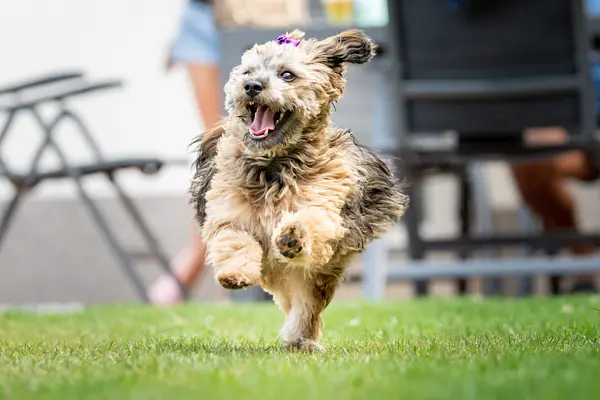As a new puppy owner, you may be eager to start exploring the world with your furry friend and engaging in plenty of playtime. While exercise is essential for your puppy's physical and mental development, it's important to understand their unique needs and limitations. In this post, we'll discuss the appropriate amounts and types of exercise for growing puppies to help you keep your little one healthy and happy.
How Much Exercise Does Your Puppy Need?
Puppies have different exercise requirements depending on their age, breed, and individual needs. A general rule of thumb is to provide 5 minutes of exercise per month of age, twice a day, until your puppy reaches adulthood. For example:
- 2 months old: 10 minutes of exercise, twice daily
- 4 months old: 20 minutes of exercise, twice daily
- 6 months old: 30 minutes of exercise, twice daily
Keep in mind that these are guidelines, and some puppies may require more or less exercise based on their energy levels and breed-specific needs.
Types of Exercise for Puppies
Short walks: Begin with short, frequent walks to help your puppy build stamina and confidence. Gradually increase the duration as your puppy grows.
Playtime: Engage in gentle play sessions with your puppy, using age-appropriate toys. This can include fetch, tug-of-war, or hide-and-seek.
Mental stimulation: Provide puzzle toys, food-dispensing toys, and simple training exercises to keep your puppy's mind engaged and prevent boredom.
Puppy socialization classes: Enroll in a puppy socialization class to expose your puppy to new experiences, people, and other dogs in a controlled environment.
Swimming: If your puppy enjoys the water, supervised swimming can be a low-impact form of exercise that's gentle on growing joints.
Avoiding Over-Exercise
While exercise is important, it's crucial not to overdo it with your growing puppy. Over-exercising can lead to joint and bone problems, particularly in large-breed puppies. Signs that your puppy may be getting too much exercise include:
- Excessive panting or difficulty catching their breath
- Lagging behind on walks or refusing to continue
- Limping or showing signs of discomfort
- Sleeping more than usual
If you notice any of these signs, reduce the intensity or duration of your puppy's exercise and consult with your veterinarian if concerns persist.
Using the "Doggy Time" App
To help you keep track of your puppy's exercise and ensure they're getting the appropriate amount, consider using the "Doggy Time" app. This app allows you to collaborate with family members on logging your puppy's activities, including exercise sessions. You can set goals, track your puppy's progress, and make sure everyone is on the same page regarding your puppy's exercise needs.
The "Doggy Time" app also features smart alarms and scheduling, so you can plan your puppy's daily routine and ensure that exercise remains a consistent part of their day. By setting reminders for regular exercise sessions and using the app to log your puppy's activities, you'll be able to provide a well-rounded exercise program that supports your puppy's healthy growth and development.
With the help of the "Doggy Time" app and a commitment to providing appropriate, supervised exercise, you'll be setting your puppy up for a lifetime of health and happiness. Happy exercising!






